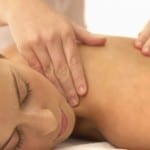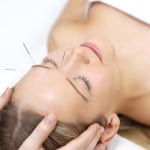Acupuncture commonly treats muscular pain, joint pain, nerve-related pain, digestives issues, menstrual issues, common headaches, migraines, insomnia, automobile injuries, stress-related symptoms, and seasonal allergies. Additionally, I have treated people with Parkinson’s disease, multiple sclerosis, fibromyalgia, and shingles. The side effects of acupuncture are lower stress, a calmer mindset, improved circulation and digestion, and a healthier metabolic level. Best of all, this inner health translates to an outer beauty that manifests as clear eyes, healthy skin, and a smile of contentment.
*Individual results may vary.
We are located in the Hollywood district of Northeast Portland, a safe neighborhood readily accessible by car (on site parking) or MAX light rail.
Shinichi Moriyama Acupuncture
3939 NE Hancock Street, Suite 217
Portland, OR 97212
(503) 419-8025
Acupuncture clinic in NE Portland, Oregon
My goals as an acupuncturist are to help you achieve the optimal level of health by assisting you to be aware of your posture, movement, lifestyle, and dietary habits and, by doing so, to make your acupuncture appointments preventative in nature. In an acupuncture treatment, the client participates in the healing process as much as the practitioner does. When you come to see me on a regular basis, you and I will work together to handle your health issues before they become severe or chronic.
It is 2021 as I am writing this, and I definitely encounter much less skepticism about acupuncture (thanks to people like you!) compared to 2004 when I graduated from OCOM. In fact, I received 5 referrals from different medical offices this month. I am very grateful that this profession is gaining credibility and popularity.
So, is acupuncture real? Yes. It is real in that most major insurance companies cover acupuncture and recognize it as a valid modality for pain. From a “scientific” standpoint, the jury is still out. This is largely due to the fact that it is difficult to design a test for its efficacy.
A test on a new drug may be conducted by giving the real medicine and a placebo to test subjects. The results are compared, and the subjects who were given the real medicine show real results/improvement. When it comes to acupuncture, this test model does not work. An acupuncture session is a process, and simply needling “set” points does not elicit the desired effects. An acupuncturist must consider the depth of insertion, the point combination, and the strength and duration of the needle stimulation in order to individually cater to the person’s needs (body type, age, gender, etc.).
I believe the recent acceptance of acupuncture is due to the empirical results: real people feeling better because of acupuncture. Acupuncture was officially introduced to the US in the 70’s, and there has been enough empirical evidence accumulated over the last 50 years. In Asia, we have been doing this much longer, collecting data, and making it into a comprehensive system. In our tradition, we have observed that an acupuncture practice relieves pain through:
- Relaxing the muscles, ligaments, and tendons by needling
- Improving the circulation of blood by needling
- Improving the posture and lifestyle by stretching and meditation
New research into acupuncture is conducted every year. Hopefully, AI and a big data pool will shed some light on this matter someday.
*Individual results may vary
No. It should NOT hurt when you go to an experienced acupuncturist. You may feel a tiny prick on the areas over thin skin such as fingers and toes. In a typical acupuncture session, about twenty to thirty points are chosen. These sensitive points on the fingers and toes are just a few among them. Most clinically chosen points are on the forearms, the legs, the torso, and the scalp, where you rarely feel the extremely thin needles.
There is a term, 得気De Qi (Chinese) or Tokki (Japanese) in our medicine. It describes the specific sensation elicited from acupuncture. I have heard people say “dull, achy”, “warm”, “pulsating” on needled points. A skilled clinician is able to make the sensation propagate to desired directions in an attempt to relax the target areas. The sensation may come immediately or after a few minutes. The sensation is so pleasant that most people fall asleep on the treatment table, and most people choose to come back for this sensation. View demonstration.
Occasionally, I meet people that are very sensitive. For them, I can offer a painless option. This is a good modality for infants and small children as well.
*Individual results may vary.
Many insurance companies nationwide accept acupuncture as a valid modality to treat accident-related pain. In Oregon, up to $15,000 is covered under Personal Injury Protection. If you were recently in a car accident, let me just say I am very sorry. I was in a minor one once, and it was a painful experience for several weeks. Commonly, people suffer from whiplash injuries, spinal pain, sciatica, joint pain, headache, and nausea after automobile accidents. Acupuncture can definitely help you with these conditions .
I can handle the insurance claims for you. On the day of the first session, please provide me the claim number, the date of loss, the name of the insurance carrier, the name of the adjustor, and his/her phone number and email address.
I hope that I can help you lighten your burden.
*Individual results may vary
My services
Japanese Bodywork
Japanese bodywork is a unique, effective blend of massage, acupuncture, and stretching instructions that you can easily follow at home. it is an all encompassing modality that enables you to achieve optimal levels of health mechanically and energetically.
read moreAcupuncture
Acupuncture is an alternative medicine originating in ancient China, treating patients by manipulating thin, solid needles inserted into the skin. According to traditional Chinese medicine, stimulating these points can correct imbalances in the flow of qi through channels known as meridians.
read moreChinese Herbs
Together with acupuncture, herbal medicine is a major pillar of Chinese medicine. the Chinese pharmacopoeia lists over 6,000 different medicinal substances in terms of their properties and the disharmonies that they were helpful with. There are about 600 different herbs in common use today.
read more




